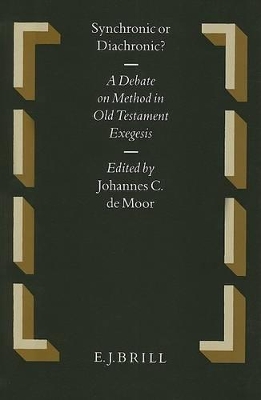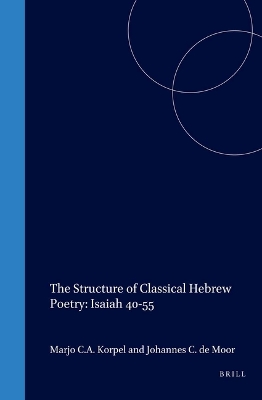Oudtestamentische Studien, Old Testament Studies
2 primary works
Book 34
In Old Testament exegesis a gap is widening between the adherents of the "diachronic", historical-critical approach and those who out of dissatisfaction with both the results and the methods of this "classical" approach opt for a wide variety of "synchronic" approaches. The Ninth Joint Meeting of the Dutch "Oudtestamentisch Werkgezelschap" and the British "Society for Old Testament Study", held at Kampen 28-31 August 1994, brought together partisans from both camps who engaged in a most interesting and fruitful debate on one of the major methodological issues confronting modern O.T. scholarship. This volume contains the papers read as well as some reports from the workshops. With indices of texts and subjects.
Book 41
The Structure of Classical Hebrew Poetry: Isaiah 40-55
by M.C.A. Korpel and Johannes de Moor
Published 22 December 1998
Exegesis starts with the delimitation of the pericope to be interpreted. Yet the principles for selecting passages which form the part of departure for the exegete are seldom made explicit and if one compares various commentaries and Bible translations, it soon becomes apparent that this lack of methodical transparency gives rise to a lot of confusion and dissent.
In this work the authors make use of text divisions found in ancient Hebrew, Greek and Syriac manuscripts of Isaiah 40-55 (Deutero-Isaiah). For the first time the poetic structure of the text is based on controllable evidence which is roughly 500-1000 years older than the medieval Masoretic manuscripts on which all modern editions are based. The results are astonishing and raise the question why this type of evidence has been largely neglected thus far.
In this work the authors make use of text divisions found in ancient Hebrew, Greek and Syriac manuscripts of Isaiah 40-55 (Deutero-Isaiah). For the first time the poetic structure of the text is based on controllable evidence which is roughly 500-1000 years older than the medieval Masoretic manuscripts on which all modern editions are based. The results are astonishing and raise the question why this type of evidence has been largely neglected thus far.

